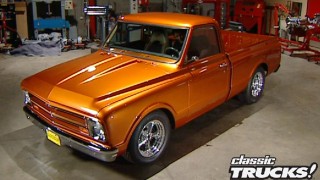
EFI on Jeep
We replace the carburetor on an '81 Jeep Scrambler with modern throttle body injection, addressing its emission and performance challenges. Next, we explore David Webb's remarkable transformation of a 1948 Studebaker pickup into a stunning lead sled, showcasing features like a chopped top, custom chassis, and a powerful 454 big block Chevy under the hood.
Season 4
Episode 2















